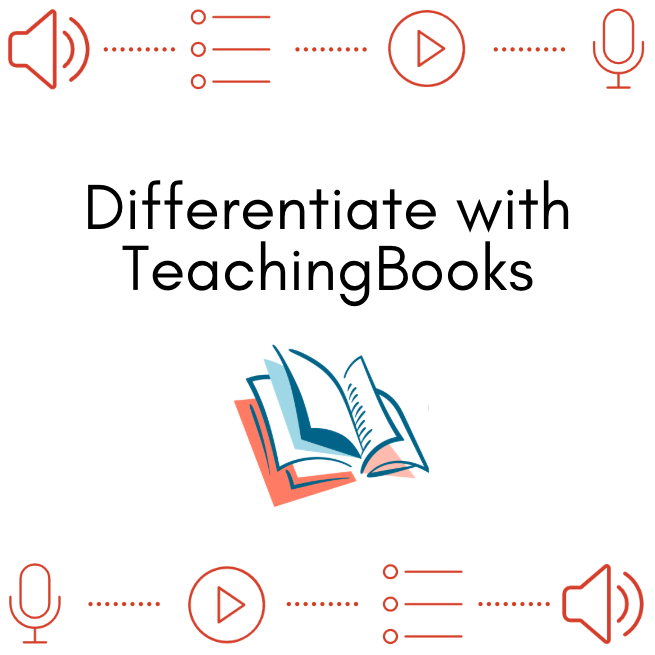
Provide responsive literacy instruction that varies content, pacing, and outcomes to meet and support readers where they are.
Vary Content
Use a variety of resource formats to support different learning styles.
- Provide text, audio, and visual support with…
- Transcripts provided with many audio resources.
- Author interviews across all formats.
- Inspire reading engagement beyond the text.
- Reader’s theater scripts develop deeper comprehension.
- Audiobook excerpts aid reading fluency.
- Story Time Activity Kits infuse play into literacy.
Scaffold Instruction
Engage with multiple delivery methods to expand learning modalities.
- Match readers to titles with the text complexity toolkit.
- Support all students with multi-leveled lessons that…
- Allow differentiation for students reading the same text.
- Expand reader’s workshops when using a variety of texts.
- Create self-paced learning centers with QR codes…
- Add Meet-the-Author Recordings for independent author studies.
- Include vocabulary lists for comprehension or book readings to model fluency.
Differentiate Product
Vary how readers demonstrate comprehension or appreciation of a text.
- Present a book with book trailers — analyze what makes an effective trailer and create your own.
- Practice different writing models — reference these examples and write your own…
- Adapt a text.
- Turn a pivotal novel scene into a graphic spread with inspiration from existing adaptations like those for Speak, A Wrinkle in Time, and The Odyssey
- Listen to authors discuss and perform reader’s theater, explore other reader’s theater scripts, then write your own script for a scene from the text.
What’s working for you?
How are you using TeachingBooks to differentiate your literacy instruction? Leave your ideas in a comment below!

Leave a Reply